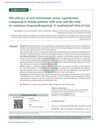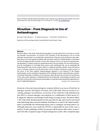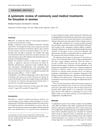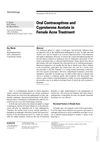G-Proteins, Receptor Signal Transduction, and Growth Hormone Secretion
September 1993
in “
PubMed
”
androgenization hirsutism seborrhea acne hair loss menstrual irregularities masculinization virilizing tumors Cushing's syndrome idiopathic hirsutism late onset adrenal enzyme defects polycystic ovary syndrome antiandrogenic drugs cyproterone acetate spironolactone dehydrotestosterone androgen receptors PCOS DHT
TLDR The document concludes that antiandrogenic drugs like cyproterone acetate and spironolactone are effective but not permanent treatments for skin-related androgenization in women.
The document discusses the clinical aspects and treatment options for androgenization in women, which can manifest in a major form with symptoms like hirsutism, seborrhea, acne, hair loss, menstrual irregularities, and masculinization, or a minor form primarily involving skin changes. Various causes such as virilizing tumors, congenital syndromes, Cushing's syndrome and disease, iatrogenic forms, idiopathic hirsutism, late onset adrenal enzyme defects, and polycystic ovary syndrome are reviewed. The document highlights the use of antiandrogenic drugs, particularly cyproterone acetate and spironolactone, which have shown good but not permanent results in treating simple cutaneous androgenization, affecting about 10% of women. These drugs work by competing with dehydrotestosterone for androgen receptors in the skin. The indications, usage, and side effects of these treatments are also discussed.




